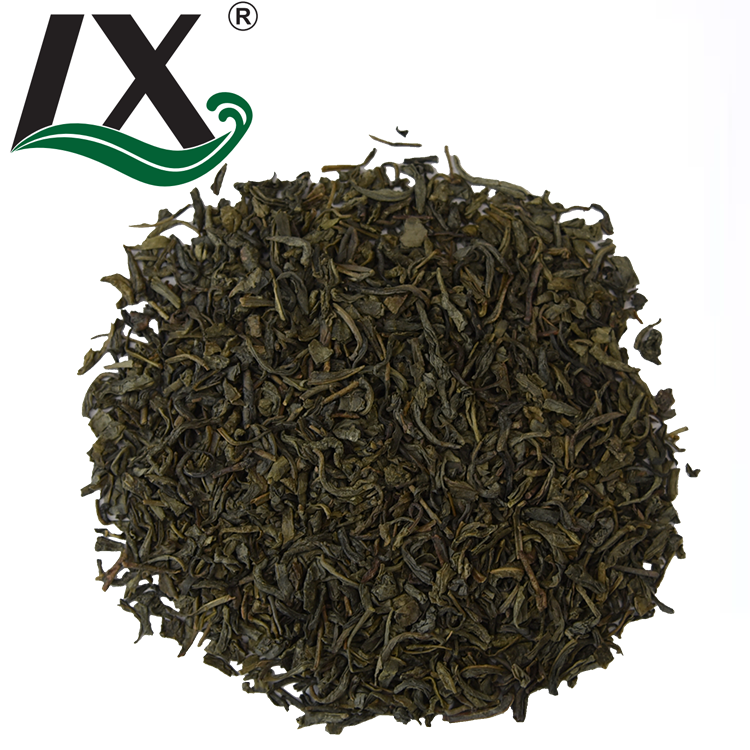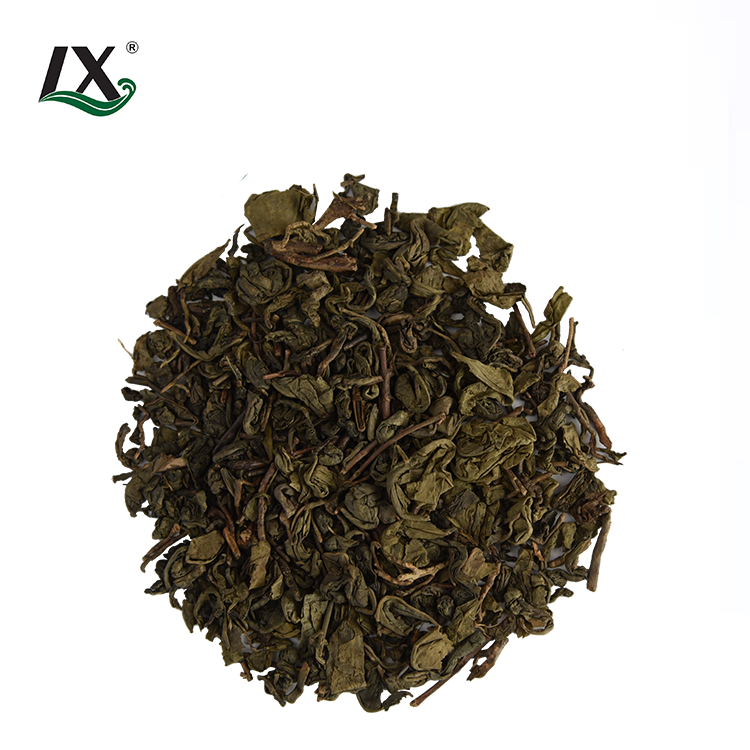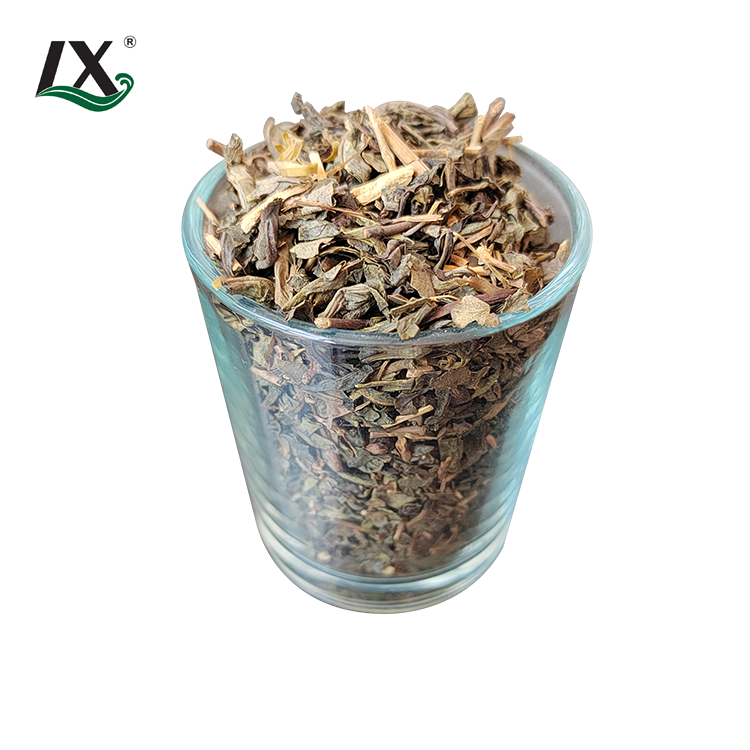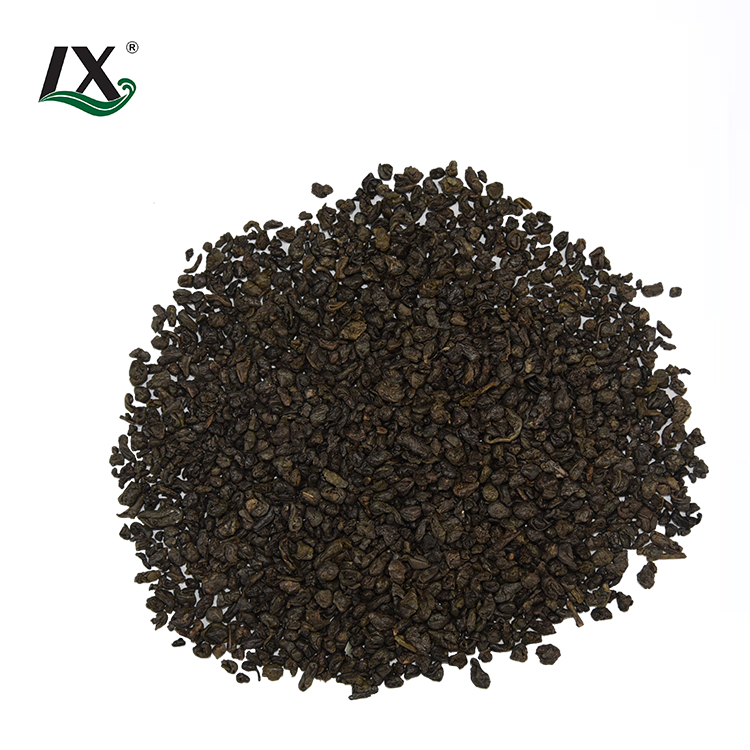China Green Tea vs. China Oolong Tea: A Comparison of Flavor, Benefits, and Traditions
China has long been celebrated for its rich tea culture, offering some of the finest varieties known around the world. Two of the most prominent types of Chinese tea are green tea and oolong tea, each with its unique flavor, health benefits, and traditions. This comprehensive guide explores the differences and similarities between China green tea and China oolong tea, delving into their flavor profiles, health advantages, and cultural significance.
An Overview of Chinese Tea Culture
Tea is deeply woven into the fabric of Chinese society, where it is celebrated not merely as a beverage but as a profound symbol of harmony, respect, and tranquility. The origins of Chinese tea culture trace back thousands of years to the era of the legendary Emperor Shen Nong, who is said to have discovered tea's invigorating properties by accident. This discovery marked the beginning of tea's transformation from a simple drink into a cherished element of Chinese life.
Tea has since evolved into an integral part of various social and cultural rituals. Central to this tradition is the Chinese tea ceremony, a practice that embodies a deep respect for nature and a meticulous approach to preparation. The ceremony is not just about the act of drinking tea but about creating a serene and reflective experience.
Among the many types of tea enjoyed in China, green and oolong teas hold particularly significant roles. Green tea, known for its delicate flavor and light aroma, is often associated with clarity and freshness. In contrast, oolong tea, with its complex, nuanced profile, reflects the depth and richness of Chinese tea culture. Exploring these two types of tea reveals a glimpse into the diverse and intricate world of Chinese tea traditions.
China Green Tea - An Introduction
Chinese green tea, renowned for its ancient origins and global fame, stands out as one of the oldest and most revered varieties of tea. Its processing involves minimal oxidation, which helps retain the leaves' vibrant green color and their characteristic fresh, vegetal flavor. This careful preservation of natural qualities contributes to its distinctive taste and appearance.
Among the myriad of Chinese green teas, several varieties have achieved notable popularity. Longjing, also known as Dragon Well tea, is celebrated for its sweet, nutty flavor and flat, smooth leaves. Bi Luo Chun, or Green Snail Spring tea, is prized for its delicate floral notes and tightly rolled leaves. Huangshan Maofeng, from the Huangshan region, is recognized for its subtle, sweet flavor and fine, downy buds. Additionally, China Green Tea Special Chunmee 9371 is known for its slightly fruity taste and bright, fresh aroma.
The cultivation of Chinese green tea spans various regions, each contributing unique characteristics to the tea. The production process typically starts with the careful plucking of young tea leaves. These leaves are then steamed or pan-fired to halt oxidation, preserving their color and flavor. Finally, the leaves are rolled and dried to achieve the desired shape and enhance the tea’s fresh, grassy notes. This meticulous process ensures that each cup of Chinese green tea offers a taste of tradition and craftsmanship.

China Oolong Tea - An Introduction
Chinese oolong tea occupies a distinctive position in the spectrum between green and black tea, characterized by its partial oxidation, which imparts a complex and varied flavor profile. This unique processing method results in a tea that can exhibit a wide range of flavors, from delicate floral and fruity notes to deeper roasted and woody undertones.
Some of the most renowned types of Chinese oolong tea include Tie Guan Yin, Da Hong Pao, and Shui Xian. Tie Guan Yin, also known as Iron Goddess of Mercy, is celebrated for its floral aroma and smooth, honey-like taste. Da Hong Pao, a prized tea from the Wuyi Mountains, is known for its rich, roasted flavor and deep, complex aroma. Shui Xian, or Narcissus tea, offers a fragrant, woody flavor with a hint of sweetness.
The production of oolong tea is a meticulous process involving several key steps. After the leaves are plucked, they undergo partial oxidation, which is carefully controlled to develop the desired flavor profile. The leaves are then rolled to break the cell walls and release essential oils, followed by roasting to further enhance the tea's complexity. This process varies depending on the specific type of oolong and the region where it is grown, resulting in a tea that blends the fresh, green qualities with the robust, nuanced flavors of black tea.
Flavor Profile of China Green Tea
Chinese green tea is highly esteemed for its light, refreshing taste and delicate aroma, which often features notes of grass, fresh herbs, and subtle sweetness. This tea is celebrated not only for its flavor but also for its nuanced characteristics, which can vary significantly based on several factors.
One notable variety is Longjing tea, also known as Dragon Well tea. This renowned green tea is prized for its mellow, nutty flavor with distinct hints of chestnut, providing a smooth and satisfying taste experience. Another popular type is Bi Luo Chun, which is appreciated for its sweet, fruity aftertaste and fragrant aroma.
The flavor profile of green tea can be influenced by numerous factors, including the specific tea variety, the region where it is cultivated, the time of harvest, and the methods used in processing. For instance, teas grown in high-altitude regions often exhibit more complex flavors. The cooler temperatures and slower growth at higher elevations contribute to a richer, fuller taste compared to teas grown at lower altitudes. Additionally, the processing techniques—such as steaming or pan-firing—play a crucial role in shaping the final flavor profile, enhancing the tea’s natural sweetness and vegetal notes.
Flavor Profile of China Oolong Tea
Oolong tea is renowned for its diverse range of flavors, which can span from light and floral to deep and roasted. This variety in taste is largely attributed to the tea’s unique oxidation process.
One of the well-known oolong teas, Tie Guan Yin, offers a delightful floral aroma complemented by a smooth, sweet taste. This tea’s light oxidation contributes to its delicate and fragrant profile, making it a favorite among those who enjoy a more nuanced, subtly sweet cup. On the other hand, Da Hong Pao presents a bold, toasty flavor with hints of stone fruit. Its richer, more robust taste results from a higher level of oxidation, which imparts deeper, more complex flavors to the tea.
The oxidation process in oolong tea plays a crucial role in determining its flavor complexity. Oolong teas are partially oxidized, with levels typically ranging from 20% to 80%. Lightly oxidized oolongs, with lower oxidation levels, tend to have a fresher, more floral character, reflecting their closer affinity to green tea. In contrast, heavily oxidized oolongs, with higher oxidation levels, exhibit stronger, richer flavors that may include caramelized notes and a more pronounced toasty or roasted quality. This range of oxidation levels allows oolong tea to offer a broad spectrum of flavor profiles, catering to various taste preferences.
Health Benefits of China Green Tea
China green tea is celebrated for its numerous health benefits, largely attributed to its high antioxidant content, especially catechins such as epigallocatechin gallate (EGCG). These powerful compounds contribute to a range of positive effects on overall health:
Boost Metabolism: Green tea is well-known for its potential to enhance metabolism and support weight management. The natural caffeine content, combined with catechins like EGCG, can increase fat oxidation and promote thermogenesis, which helps in burning calories more efficiently.
Improve Brain Function: The synergy between caffeine and L-theanine in green tea has been shown to positively influence brain function. Caffeine, a known stimulant, enhances alertness, mood, and cognitive performance. L-theanine, an amino acid, promotes relaxation without drowsiness, leading to improved attention and memory.
Promote Heart Health: Regular consumption of green tea is associated with a lower risk of cardiovascular diseases. The antioxidants in green tea help improve blood flow, reduce levels of LDL cholesterol, and support overall heart health. This can contribute to a lower risk of heart attacks and strokes.
Support Immune System: The antioxidants, particularly EGCG, in green tea play a role in strengthening the immune system. They help combat oxidative stress and inflammation, thereby enhancing the body's ability to fight off infections and illnesses.
Incorporating China green tea into your daily routine can provide these health benefits, contributing to a healthier and more balanced lifestyle.
Health Benefits of China Oolong Tea
China oolong tea offers a range of health benefits, combining many of the advantages of green tea with unique properties due to its partial oxidation and diverse array of polyphenols. Here are some key benefits of drinking oolong tea:
Aid Digestion: The polyphenols found in oolong tea can enhance digestive health by boosting enzyme activity. This helps in the effective breakdown of fats and may alleviate digestive issues, promoting smoother digestion and overall gut health.
Boost Metabolism: Oolong tea contains both caffeine and catechins, similar to green tea. These compounds can help increase metabolism and support weight management by enhancing fat oxidation and energy expenditure. This can contribute to better weight control and metabolic health.
Reduce Stress: Oolong tea includes L-theanine, an amino acid known for its calming effects. L-theanine helps to reduce stress and promote relaxation without causing drowsiness. This makes oolong tea a beneficial choice for managing stress and maintaining mental calmness.
Enhance Mental Clarity: The combination of caffeine and antioxidants in oolong tea can improve mental clarity and cognitive function. Caffeine boosts alertness and concentration, while antioxidants help protect the brain from oxidative stress, contributing to better overall mental focus and cognitive performance.
Incorporating China oolong tea into your daily routine can provide these benefits, supporting both physical and mental well-being.
Traditions Surrounding China Green Tea
Green tea has been an integral part of Chinese culture for centuries, deeply embedded in both daily life and ceremonial practices. Traditionally, green tea is cultivated in renowned tea-producing regions such as Zhejiang, Anhui, and Jiangxi. Each of these areas imparts unique characteristics to the tea, influenced by the local climate, soil, and cultivation methods. Zhejiang, for instance, is famous for its Longjing tea, known for its nutty, smooth flavor, while Anhui is renowned for its Huangshan Maofeng, prized for its delicate and aromatic qualities.
The harvesting of green tea is a meticulous and revered practice in China. The most esteemed green teas are those harvested in early spring, before the Qingming Festival, often referred to as "pre-Qingming" tea. These early harvests are celebrated for their tender leaves and delicate, nuanced flavors, reflecting the ideal growing conditions and careful picking techniques.
In traditional Chinese tea ceremonies, green tea is prepared with great attention to detail, aiming to enhance its fresh aroma and subtle taste. The preparation process emphasizes the tea's delicate qualities, from the temperature of the water to the timing of the steeping. Drinking green tea is not just a daily habit but also a cherished moment of relaxation and reflection. It serves as a way to pause and appreciate the present, making it a favorite beverage in daily Chinese life.
Traditions Surrounding China Oolong Tea
Oolong tea, particularly the renowned varieties from the Wuyi Mountains in Fujian Province and Anxi County in Guangdong Province, holds a deep place in Chinese cultural heritage. These regions are celebrated for producing some of the finest oolong teas, each with its unique flavor profile and rich history.
One of the most significant practices associated with oolong tea is the Gongfu tea ceremony, which has its roots in the Fujian and Guangdong provinces. This traditional method of tea preparation is characterized by its emphasis on precision and patience. The Gongfu ceremony involves using small teapots and multiple infusions to carefully extract and appreciate the tea's complex flavors and aromas. The process allows tea enthusiasts to fully explore the nuanced notes and evolving characteristics of the oolong tea with each steeping.
The traditions surrounding oolong tea underscore its esteemed status in Chinese society. It is not only enjoyed during everyday moments but also plays a central role in social gatherings and ceremonial events. Serving oolong tea in these settings is a way to express hospitality, respect, and appreciation for guests. The meticulous preparation and sharing of oolong tea reflect a deep cultural appreciation for the art of tea and the values of community and connection.
Processing Differences Between Green Tea and Oolong Tea
The processing methods of green and oolong teas are fundamental to their differences in flavor, aroma, and health benefits:
Green Tea: The processing of green tea involves minimal oxidation. Fresh leaves are steamed or pan-fired to halt oxidation, preserving their green color and fresh flavor. The leaves are then rolled and dried to lock in their delicate characteristics.
Oolong Tea: Oolong tea undergoes partial oxidation, a process that can vary widely depending on the desired flavor profile. The leaves are withered, bruised to release enzymes, partially oxidized, and then pan-fired or roasted. This intricate process creates a diverse spectrum of flavors.
Brewing Techniques for China Green Tea
The key to enjoying a perfect cup of green tea lies in careful brewing. Here's how to brew China green tea:
Water Temperature: Use water heated to 75-85°C (167-185°F) to avoid burning the delicate leaves.
Brewing Time: Steep for 2-3 minutes for a light, refreshing taste. Longer steeping may result in a bitter flavor.
Teaware: Use a glass or porcelain pot to observe the beautiful color of the tea as it infuses.
Brewing Techniques for China Oolong Tea
Brewing China oolong tea is an art form that requires attention to detail:
Water Temperature: Oolong tea is best brewed with water heated to 85-95°C (185-203°F).
Brewing Time: Steep for 1-2 minutes. Oolong tea can be re-steeped multiple times, with each infusion revealing new layers of flavor.
Teaware: A Gaiwan or Yixing teapot is ideal for oolong tea, enhancing the tea's aroma and taste over successive brews.
Taste Comparison: China Green Tea vs. China Oolong Tea
China green tea offers a light, fresh, and sometimes slightly sweet flavor, with grassy and vegetal notes. In contrast, China oolong tea presents a more complex taste, ranging from floral and fruity to rich and roasted, depending on its oxidation level.
Brewing methods significantly impact each tea's flavor. Green tea is delicate and can become bitter if over-steeped, while oolong tea's nuanced taste develops over multiple infusions, allowing for a more dynamic experience.
Choosing Between China Green Tea and China Oolong Tea
When deciding between China green tea and China oolong tea, consider factors such as flavor preferences, health benefits, and the occasion. Green tea is an excellent choice for a light, refreshing drink, while oolong tea offers a more robust and intricate flavor. Both teas can be incorporated into a balanced diet, complementing different meals and moments.

Conclusion
In conclusion, China green tea and China oolong tea each offer unique flavors, health benefits, and cultural significance. Whether you prefer the light, fresh taste of green tea or the rich, complex flavors of oolong, both types of tea provide a delightful way to experience the essence of Chinese tea culture.

















